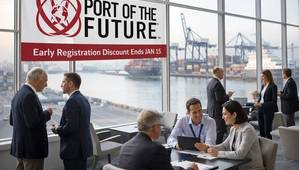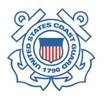New titles addressing bulk carrier operations and cargo liquefaction are among a series of new modules being introduced by computer-based training specialist, Seagull AS.
Introduction to bulk carriers and Liquefying cargos are the first in a series of ten new titles Seagull is releasing this year and in 2015, each covering crucial aspects of bulk shipping operations.
Introduction to bulk carriers is directed at deck, STCW operational level and assists the learner in identifying bulk, ore and combination carriers, commonly used classifications, and the typical types of cargo carried by these vessels. It helps the learner recognize the key commercial aspects of the bulk carrier trade and identify the uses of equipment specific to these vessel types and relevant safety issues.
Liquefying cargos addresses the dangers of carrying cargos that might liquefy during the voyage, make the ship unstable and lead to the possible loss of the ship, cargo and crew. Cargo liquefaction has resulted in severe loss of crew life in recent years. The module is directed at deck, STCW and operational staff and it assists the learner in recognizing the particular hazards and precautions associated with the carriage of IMSBC Code Group A cargos (cargos which may liquefy).
“Intercargo has described nickel ore as the world’s most dangerous and the liquefaction of nickel ore cargos during transport was responsible for the loss of 66 lives in South East Asia from 2009 to 2011 alone,” said Roger Ringstad, Seagull Managing Director. “The module discusses the nature of liquefaction and explains the key definitions in the International Maritime Solid Bulk Cargos (IMSBC) Code. The responsibilities of the cargo shipper to test the cargo and to demonstrate its safety to the Certifying Authority of the loading port if necessary are covered.”
In addition to the two modules on bulk carriers, Seagull has made a significant contribution to the understanding of risks in the offshore industry with three new titles, Working at height, Anchor handling operation and GOMO (Guidelines for Offshore Marine Operations) awareness.
Working at height covers how to access elevated working places safely and the correct use of a waist belt safety harness and a full body safety harness when attached to a fall restraint or a fall arrest system. The module examines the use of cranes to transfer personnel between a vessel and installation and features high rescue techniques used for a disabled or unconscious person. This module is aimed at deck/engine STCW operational and support level personnel.
Anchor handling operation uses video recorded on an anchor handler blended with sound and additional images to achieve the learning objectives. It shows the vessel preparing in port and sailing to the rig location. The anchor is seen being received from the rig and decked to disconnect it from the chain which is then stowed in the vessel’s anchor bins. With the required amount of chain stowed, the chain is broken to add a buoyed wire insert to clear a sub-sea obstruction.
Once this is completed the final operation of reconnecting the anchor and deploying it using a buoy pennant is seen.
As with the Working at height module, Anchor handling operation is directed at deck/engine STCW operational and support level personnel.
The objective of GOMO awareness is to provide guidance to the best practices to promote the safety on board all vessels servicing and supporting offshore facilities, and to reduce the risks associated with such operations including accidents and pollution incidents. The module identifies the crucial role of good communications for safe operations and also the action to be undertaken when an operation is not covered by GOMO Guidelines. This module is directed at all personnel involved in safety onboard ship.
Seagull has also released a number of modules covering a variety of topics including piracy and armed robbery, anchor handling, leadership and communication for maritime leaders, green passport (inventory of hazardous materials), engineering in cold environments and recovery of persons from water.
“Our continually expanding series of modules dedicated to the many various disciplines of the international maritime industry underscore our commitment to helping users achieve best practice and maintain safe and environmentally-friendly operations,” Ringstad said.
seagull.no



